Plum is a tasty and valuable fruit that attracts the attention of all without exception. Plum has incredibly wide use in cooking: compote, jams, jams, bake pies, etc. are written out of it. During flowering, the drain tree decorates the garden and attracts attention to him. In addition, the plum refers to the most traditional trees of Russia, standing in one row with an apple tree, pear and cherry. The tree was loved by his rich yield, strength. Of course, plum is more a thermal-loving plant. But the gardeners of the Urals and Siberia may not despair. A huge amount of no less valuable varieties are derived, which are intended for cultivation in such climatic conditions. In this article, we will tell about the most popular varieties, tricks of cultivation of plums in the Urals, care for this fruit tree.
Description of plum
Motherland Plums consider Asia, the Caucasus, Iran, from where she came many centuries ago. Among the characteristic features of this tree can be listed:
- plum is able to achieve a maximum height of 5 meters;
- plum belongs to the family of pink;
- plum during flowering period is abundantly covered with flowers with 5 petals. Colors color can vary from snow-white to gentle pink;
- the fruit of plum is a bone with a juicy flesh. The taste of pulp from different varieties is different. The greatest popularity for self-cultivation was acquired by varieties with dessert plums;
- plum fruits also have a different color. You can meet bright red fruits, pink, yellow and others.
Useful properties of plum
Why is draining so popular for cultivation? What is special in these fruits? In addition to its taste, plum has a number of useful properties. Deciding to grow this fruit tree at home, you will provide yourself with a magnificent source of valuable vitamins and minerals. This is especially important for the residents of the Urals, where there is not such a large selection of berries and fruits grown in the gardens. Among the most important components of plum can be listed:
- cellulose;
- carbohydrates;
- proteins;
- organic acids;
- pectin;
- vitamins A, B1, B2, C, E;
- folic acid;
- potassium, magnesium, calcium, phosphorus;
- manganese, cobalt, iron, zinc, fluorine, etc.
Plum is also considered to be a dietary product, because 100 grams of plums contain only 43 kcal. The cultivation of this tree will be especially useful for those who follow their health, adheres to proper nutrition. Plum fruits are often used in baby nutrition. On the human body, plum fruits have the following influence:
- it is very helpful to use people who suffer from various diseases of the cardiovascular system. For example, increased arterial pressure, atherosclerosis.;
- a good effect on the body has drain in diseases of the kidneys and liver;
- it is often recommended to eat in some diseases of the gastrointestinal tract;
- the natural and safe view of the treatment of the drain can perform during constipation;
- it has long been proven to the effectiveness of the drain in quality and antipyretic means. It will be useful to use plums in fresh, dried, plum compote with ORVI;
- plum is also often used in food to eliminate excess cholesterol from the body;
- the diuretic effect of plum fruits is due to the content of potassium in them, which takes out excessive water, salt from the body;
- plums have a valuable cleansing effect on the body, hematopoietic. These fruits actively contribute to the removal of toxins and slags from the body;
- often the plum is used as a natural agent for raising appetite;
- the use of plum fruits in food has a beneficial effect on the nervous system, helps to fight chronic fatigue, depression, insomnia;
- plum deserved their attention and as a means of combating diseases of the organs of vision;
- in folk medicine, also found their use and leaf plums. They have anti-inflammatory, antibacterial effect. In some recipes, the leaves are advised to grind and apply to the wounds. Also from the leaves of plums prepare chambers, infusions. Plum leaves are effectively fighting with stomatitis;
- plums found their use in cosmetology. It is known to be rejuvenating, returning the skin elasticity and smoothness. On the basis of the pulp, the plums make various masks at home. You can also find a plum as a component in ready-made masks, creams in stores.
Contraindications to eat drain
Whatever the rich is the composition of these delicious fruits, there are some restrictions on eating them into food:
- do not recommend drinking in nutritional mothers. Often after their reception with nursing women, the kids have a bloating, a rumbling, meteorism;
- people who suffer obesity, diabetes, it is recommended to refrain from overweight too sweet drain. In the prunes, the sweetness is also preserved that people with similar problems avoid.
Problems in the cultivation of plums in the Urals
The Siberian climate is quite complicated and harsh. When landing any trees and shrubs in this region, it is necessary to carefully approach the selection of a plant. Incorrectly chosen grade will not be able to cope with unpredictable weather conditions, and you will not raise the harvest. What problems may face the gardeners of the Urals and Siberia during the cultivation of plums?
- Damping-off pieces of wood. With the winter damage to trees can meet quite often in this region. The bark of the tree dies. It can hit almost the whole tree or parts thereof. This happens due to the fact that the tree for a long time was under the influence of zero temperature, while being under a thick layer of snow. This is especially true when the snow falls unexpectedly early, and the land still has not had time promorznut. Damping-off - it is one of the most serious problems that can completely destroy a tree. Notice this process can be the bottom of the brown tree bark or in the bottom of the shoots. Drain may even bloom, but then vyprevshie shoots die.
- Freezing of plums. Freezing of the tree is considered less dangerous problem, compared with damping-off of its parts, for gardeners Urals. After freezing the tree can always be restored. This process always starts from the top of the tree. Learn about the problem can be darkened on the crust. Podmorzshie shoots do not bloom, but can later be restored.
Species and varieties of plums for the Urals
Currently there are more than 30 kinds of plums. Each species has a huge number of varieties. For cultivation in the Urals fits only a small part of all these species:
- ussuri drain;
- canadian plum;
- plums;
- the turn.
It is among these species and presents the most cold-resistant varieties. In various areas of the Urals and Siberia grown increasingly certain species. For example, the Urals, the most popular Ussuri drain and Western Siberia - Canadian. The most optimal for planting grade is considered a variety that was bred in the same area.
The characteristic features of the climate of the Urals are for a short period of rest plums, thaw and sudden spring frosts. Varieties of plums have dignity withstand such trials to bring a good harvest. Most of the Ural varieties of plums can not pollinate themselves. It is recommended to grow in the garden several trees of different varieties, but with the same periods of flowering. Among the best varieties of plums for the Urals are the following varieties.
pride Urals
The plum "Pride of the Ural" reaches a height of 3 m. Very yield grade, which allows you to collect from one adult to 15 kg of delicious drain. Fruits have an extended shape, a reddish hue. The flesh is delicious, sweetish, easily separated from the bone. The variety is very winter-hardy, it has good resistance to peating and frozen. Croon plum is not prone to thickening. The plum "Pride of the Ural" on the description is derived from the Shershnevskaya variety.
Pearl of Urals
Pearl of the Urals Pearl is a variety of relatively young. Released in 2005, but already managed to win the universal love of the Gardeners of the Urals. A compact tree with an empty crown grows up to 3.5 meters in height. High yield - up to 18-19 kg plums from one adult tree. Plum medium. The "Pearl of the Urals" has excellent characteristics: frost resistance, resistance to diseases, pests, to harsh climatic conditions. Fruits have a characteristic fragrance, a red color, a mass of 25 grams. Plums of this variety have high taste characteristics. The gentle flesh of the sour-sweet taste attracts many gardeners to choose exactly this variety for planting.
Gift Chelan
Another variety that is intended for cultivation in the East Siberian region. The tree begins to be fruit on the 3rd or 4th year. Fruits are not large, have a mass of 10-12 grams. Plums have a beautiful orange-red color, a juicy flesh with a pleasant sour-sweet taste. The disadvantage of the variety is its insufficient resistance to spontaneous. It has good frost-resistant characteristics.
Chebarkulskaya
Another young plum variety, which can be successfully grown in the Urals. A tree is very compact. Reaches a height of 3-3.5 meters, the same size reaches the crown in diameter. Fruits are large, dark blue painting, with a pleasant and sweet taste. From one adult tree, it is quite possible to collect a crop of 15 kg. Plum has not only excellent frost resistance, but also excellent resistance to frozen, sparing, to various diseases.
Snow White
The variety of plums, which immediately attracts attention to its name. This name was given in honor of the painting of fruits. Plums with medium wax coating have a beautiful white color. The tree grows not too high - up to 2.5 meters. But Krone is very sprawling and reaches 4 meters in diameter. High yield. One adult tree of this variety is able to award your work 20th kg of harvest. There are cases when Splash Snow White Plum successfully moved 40-degree frost.
Ural prunes
The variety has good frost resistance and high yield. Nevertheless, the fruits slightly inferior in the size of the drains of other varieties - 13-15 gr weighs one plum. The pulp has a slightly tart taste, well separated from the bone, has a low degree of juice. The tree is pollinated by Ussuriyski plums, reaches a height of 2 m.
Ural Golden
The variety of medium ripeness with annual harvest. It is known for its good winter-hardy characteristics. Yellow-colored flesh pulp is valued by its taste. The mass of one plum on average reaches 18 grams. The tree is sprawered, with an average annual increase. The plums of this variety were widely used in cooking, preserving, as well as in a simple eating in fresh form.
Growing plums in the Urals
Stage 1. Choosing a place to land plums in the Urals
Plum is a fruit tree that selectively selectively to the landing site. It is necessary to adhere to the following recommendations:
- avoid plots with groundwater too close to the surface of the earth. Plum although it loves wet soils, but does not tolerate excessive moisturies. In addition, groundwater in winter can cause frozen roots in winter. They must flow deeper 1.5 m from the surface of the Earth;
- the landing site must be well lit. Plum is still more southern plant;
- plot for landing should not be on too windy place. To protect against the cold northern wind, the plum is desirable to plant larger plants, which will serve as a barrier;
- do not choose for landing plums and low-loop areas, where it is always cold and raw air;
- choose a plot with a free access to it. First, it is necessary so that you can safely carry out all the treatments for the drainage, including trimming, feeding, watering, etc. Secondly, the root system should have enough space for growth and development. If you put a few trees in a row, then follow the minimum distance of 3 m;
- if the terrain on your site is hilly, then squeeze the plum at the top of the hill.
Stage 2. Choosing the soil for plum in the Urals
Plum is also demanding of the soil as to the place for landing. Experienced Gardeners of Urals recommend considering when landing the following plum requirements for soil:
- the soil should be very fertile;
- plum prefers moist sublinks;
- wetlands - this is not the best option for planting plums;
- too acidic soil is also not suitable for plum.
Stage 3. Selection of plum saplings in the Urals
As already mentioned, the saplings are better to buy in the nursery in the terrain, in which they will be grown. Do not buy trees from hands. It is also not worth choosing plum varieties for the Urals in the photo on the Internet. Carefully read information about the timing of flowering, ripening, flavoring characteristics of the drain. When choosing plums in the Urals, dacroom reviews are also very important. You must be exactly sure as a sapling, its winter-hardy characteristics. When buying should pay attention to:
- the appearance of the root system. Do not buy plums with rickened roots, deformed, externally disadvantaged, with disgraced shoots, etc.;
- recommended seedling age - 1-2 years;
- transport sapling is better in a wet burlap around the root system;
- after buying seedlings, it is worth attaching inscriptions on them with the names of varieties, if there were no;
- after buying a sapling it is worth it to the ground. It must be done and then if you are going to start landing in a few hours.
Stage 4. Plum landing technology in the Urals
Sizza plum in the Urals is usually autumn. For this, the spring makes a thorough resistance of the place where the drain will grow, with the removal of all weeds. To landing plums in the Urals, it is better to start together. The sequence of your actions should be as follows:
- first you need to dig a landing point with approximate sizes 70 * 80 cm. Pit sizes may vary depending on the size of the root system;
- speak the pit follows in a certain way. The topmost layer of the soil is considered the most fertile. It must be separated, folding the ground one way. The bottom layer of the pit will be the most lowland, it is folded in the other direction;
- in a center of dug holes, leak over 1 m long;
- now it's time to prepare a nutritious earth mixture, which you will fill a hole. For this you will come in handy: 2 buckets of compost, 0.2 kg of superphosphate, 0.35 kg of wood ash. All these components need to be mixed with the upper fertile layer of the soil, which you dug and postponed;
- the prepared earthy mixture is poured around the ridge with a holloch;
- the seedling is put on the northern side of the cola and spread its roots. Roots should "look" down the hill. It is most convenient to do it together. The seedling should be shrouded in such a way that the root neck is above the level of the ground by 7-8 cm. The roof should not exceed the height of the strain, because During windane weather, he can damage plum shoots;
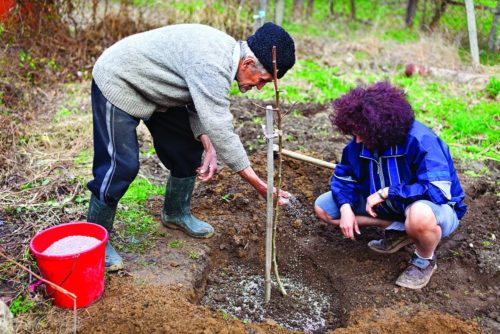
- after the seedlock is planted, the earth around him should be slightly tumped. Young tree must be abundantly pouring. One tree is enough 1-2 buckets of water. The surface of the soil after irrigation must be inspected, and tied to a peg with a drain.
Plum in the Urals. Care
After you planted the plum, you should not relax and think that it is now only to wait for the harvest. You need to make a minimum effort so that the tree felt comfortable, fully increased and developed.
Watering plums in the Urals
Plum - the tree is a moisture-loving, but it is impossible to overgrow it. Caution is also worth watering and plants over 2 years old. The fact is that frequent watering of adult plants can contribute to the weak development of shoots, stimulate infection by some pests, promote sparing. Adhere to the following recommendations for watering plums in the Urals:
- abundant watering of plums should be made in spring and early summer when active flowering or growth of shoots begins;
- it is also good to pour a tree and at the end of summer, when the ripening of fruits begins;
- watering stop in August;
- after each watering, the soil is molded to slow down the evaporation of moisture from the soil.
Plum feeding in the Urals
As a rule, each gardener has its own extinguishing scheme of plum feeding over the years. This fruit tree actively consumes minerals and fertilizers from the soil and positively refers to regular feeding. Not forgetting to feed your plum, you will provide yourself with a rich annual harvest, increased winter hardiness of the plant, resistance to pests and diseases. The approximate support scheme is as follows:
- Fucking in the fall is in making organic fertilizers in the form of a reworked manure in the settlement of 11-12 kg per 1 sq.m. 40-50 Gy of potash salt, 150-170 Gy of superphosphate also calculated 1 sq.m.
- Facing in the spring is to make a 90 cm of ammonium nitrate in calculating 1 sq.m.
These fertilizer standards are given for plants of the first 4 years of life. More adult plants dosage can be increased twice. Some gardeners tend to the scheme that excludes any feeding in the first 2-3 years of the lifespan. If the soil on your site has increased acidity, do not forget to make lime (70 grams per 1 sq. M).
Pruning plums in the Urals
For a healthy and beautiful appearance, do not forget about the pruning of plums. Distinguish the following types of trimming in which drain may need:
- sanitary trim. It is carried out in the spring to remove all shoots that did not move the wintering;
- forming trimming. Different varieties of plums in varying degrees need this type of trimming. Some varieties have a crown that is not inclined to thickening. It is these varieties that almost always grow with the correct form of a crown that does not require trimming;
- rejuvenating trimming. In this pruning need plums older than 5-8 years. 25-30% need to cut old trunks.
Preparation of plums for winter in the Urals
The way the plum takes the winter directly depends on the variety, its winter-hardy characteristics. But no matter how stable is the variety, all plums negatively relate to too sharp temperature differences. Sometimes gardeners resort to the formation of the pop-up shape of the plum - the slan. Such a form is achieved with specific trimming, bending and pinching of shoots to Earth. Plum such a form is much easier to transfer the harsh winter, because Snow Pokrov will completely close the tree and keeps it from the freezing. If the tree does not grow in a similar form, then the preparation for the winter is to whiten the stabes, the shelter of their sweetheart.
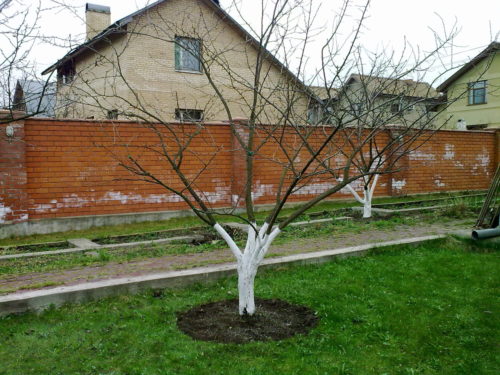
Do not spare your effort in caring for the drain. This beautiful tree can reward you with a delicious and useful harvest!

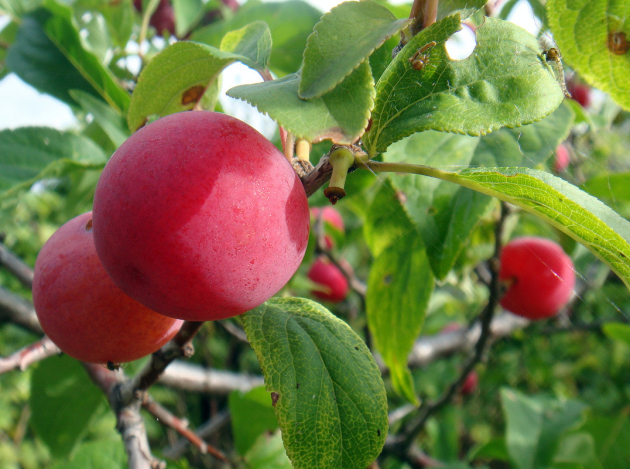
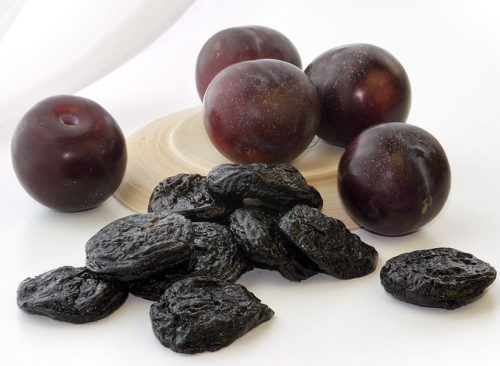
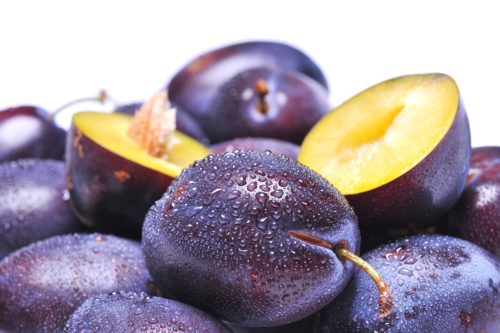
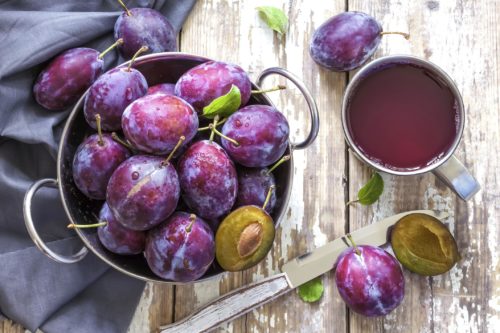
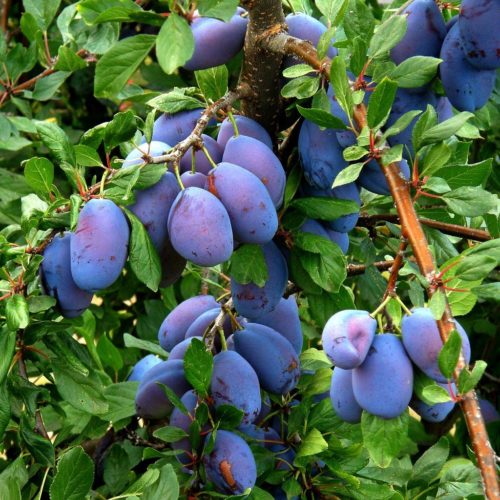
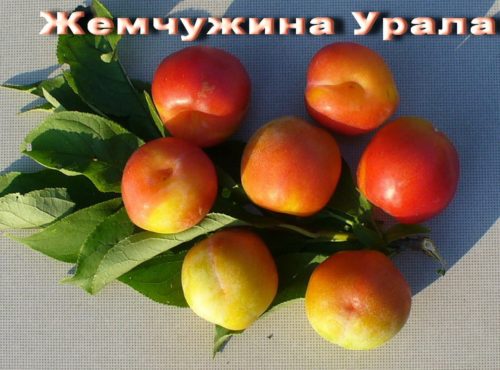
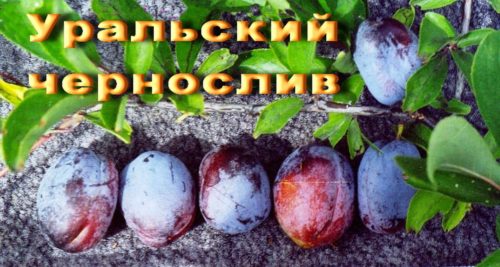
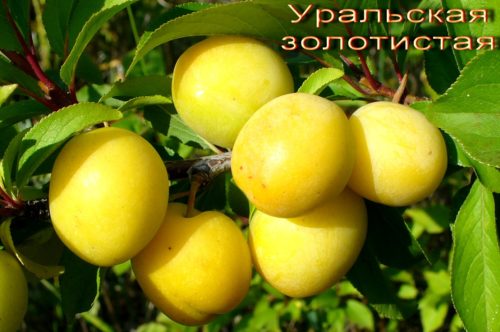
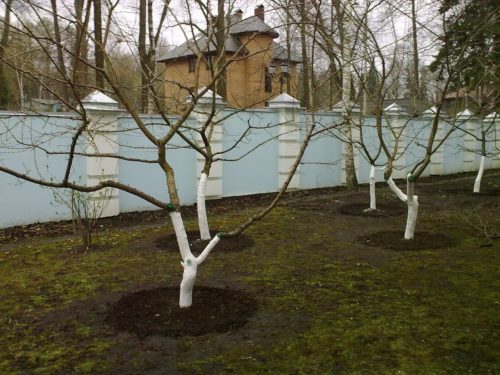
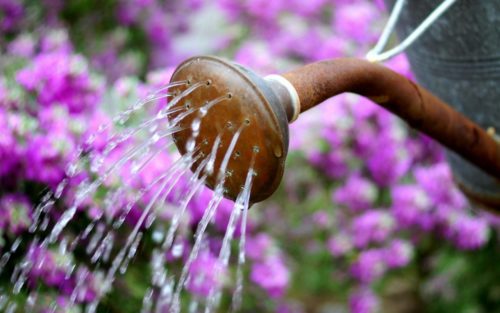
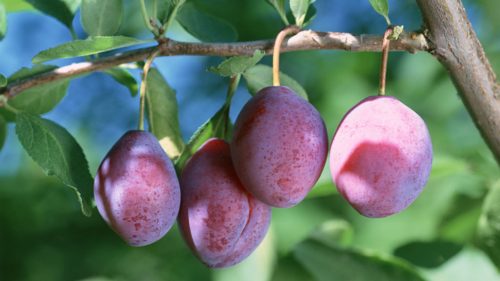
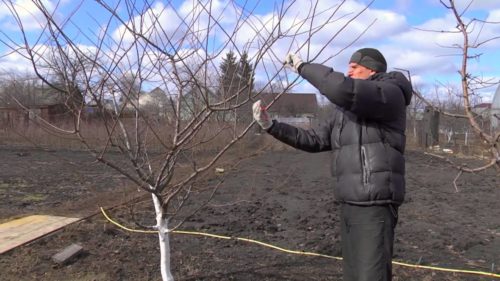












 Start a discussion ...
Start a discussion ...